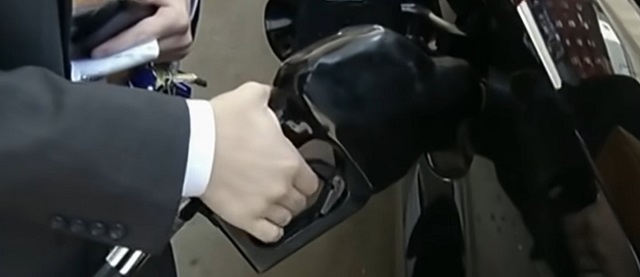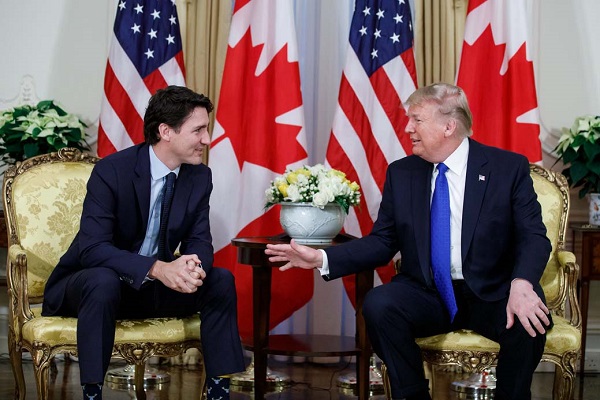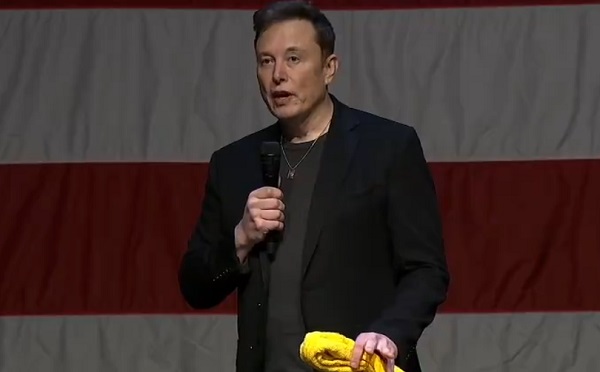Automotive
‘Save Our Cars’ Is A Winning Campaign Message In An Age Of EV Mandates

 From the Daily Caller News Foundation
From the Daily Caller News Foundation
By KEVIN MOONEY
Automobile consumers who treasure the open roads during the summertime could upend the presidential campaign and U.S. Senate races in surprising places if public opposition to electric-vehicle mandates and other regulations continues to rise.
That is what some recent polls suggest and it certainly helps to explain why the Biden administration is poised to artificially reduce fuel prices by selling one million barrels of gasoline from an energy reserve in New England timed with the summer driving season and in anticipation of the November elections.
Since the East Coast consumed in excess of three million barrels a day of gasoline last June, it is not evident that having an additional one million barrels on the market will make an appreciable difference.
Moreover, there is an argument to be made that by tapping into the reserve Team Biden is leaving the region open to cyberattacks that would disrupt energy supplies. (Recall, that is precisely what happened throughout the southeast in 2021 when a ransomware attack hit the Colonial Pipeline.)
But even in the absence of any cyber drama, the cumulative effect of President Joe Biden’s anti-energy agenda is already registering with consumers who benefit from affordable, reliable energy. This is particularly true where conventional, gas-powered cars are concerned.
On holiday weekends, cars erase differences, bring families together and improve the quality of life. The American Automobile Association (AAA) predicts almost 50 million people will travel 50 miles or more from their homes to celebrate Independence Day over the weekend of June 30 to July 4.
This would represent an increase of 3.7% from 2021 bringing travel volumes to where they were prior to the COVID-19 pandemic in 2019. This increase will be particularly acute with AAA expecting 42 million Americans to hit the roads this coming Independence Day.
But what about those EV mandates?
President Biden and California Gov. Gavin Newsom, a fellow Democrat, remain undeterred by the paucity of charging stations, the limited range of EV’s, their exorbitant costs, and the vulnerability of foreign supply chains leading back to China as they press ahead with new regulatory initiatives. Biden’s Environmental Protection Agency finalized a tailpipe emissions rule in March aimed at coercing automakers into selling more EVs while the California Air Resources Board is pressing ahead with a “zero emissions” rule the board approved last year to meet Newsom’s stated climate goals.
California is clearly working hand in glove with the Biden administration to achieve zero emissions goals for vehicles by 2035. This effort will most certainly limit consumer choice and raise costs.
Despite all the subsidies and regulatory schemes developed to favor EV’s, they represent only about 1% of the 290 million vehicles in the U.S. today. Meanwhile EV costs continue to soar.
Recent studies also show that EVs, on average, are more expensive to own and operate than their gas-powered counterparts. So how should consumers respond to the regulatory onslaught?
Enter the “Save Our Cars Coalition,” which includes 31 national and state organizations devoted to preserving the ability of consumers to select the vehicles most suitable to their needs.
Tom Pyle, president of the Institute for Energy Research, a coalition member that favors free market energy policies, views cars as an integral component of American life. The Biden-Newsom regulations amount to what Pyle describes as “an assault on American freedom.”
“In a nation as expansive as the United States, cars are not merely vehicles, they are integral to the American way of life,” Pyle says. “They play a pivotal role in our daily lives, especially in suburban and rural settings. This modern-day prohibition would outlaw a product and a value–in this case, gasoline-powered cars and trucks that have created personal mobility on an unprecedented scale – that it cannot persuade people to forego themselves.”
The coalition is perfectly positioned to make EV mandates a campaign issue in areas where the affordability of cars capable of traversing long distances without frequent stops is very much on the minds of voters. State officials who continue to double-down on California-type regulations will only serve to bolster the coalition’s arguments.
By contrast, states that break free from California’s emissions standards could become surprisingly competitive in the presidential race. Virginia Gov. Glenn Youngkin, a Republican, recently announced that he would end California’s EV mandate in his state by the end of this year. Although Virginia hasn’t backed a Republican for president since George W. Bush was re-elected in 2004, polls show Biden and Donald Trump are in a dead heat. The former, and perhaps future Republican president, is on record opposing Biden’s EV mandates.
By contrast, Gov. Phil Murphy of New Jersey, a Democrat elected in 2017 and re-elected in 2021, is moving full speed ahead with a California-type mandate requiring all new car sales to be electric by 2035. Polls show Murphy’s Jersey constituents are not keen on the policy change. In fact, more than half of state residents say they are not inclined to buy an electric car even with the mandates.
New Jersey has not voted for a Republican presidential candidate since George Bush Sr. won the state in 1988. But fresh polls show Biden leading Trump by just seven points in the Garden State. It is worth noting that New Jersey has a large block of unaffiliated voters that can be pliable in tight races such as the most recent gubernatorial campaign.
Murphy almost lost his re-election bid to Republican Jack Ciattarelli, a former assemblyman and businessman, who came within a few percentage points of pulling off an upset. Trump’s campaign rally in Wildwood, N.J., that attracted more than 100,000 people could also serve as a barometer for a potentially close election. A beach resort community, Wildwood is practically inaccessible without the kind of vehicles Biden and Newsom are attempting to ban.
The big prize though may be Pennsylvania where Trump is leading Biden in recent polls. There is also a competitive U.S. Senate race in that state between Sen. Robert Casey Jr., the Democratic incumbent, and Dave McCormick, the Republican challenger.
Polls show Casey is only ahead by six points. So far, Casey has been ducking and avoiding any questions about his position on EV mandates. With Trump already leading, and McCormick gaining in the Keystone State, anyone running on a platform of “Save Our Cars” could have a field day.
Kevin Mooney is the Senior Investigative Reporter at the Commonwealth Foundation’s free-market think tank and writes for several national publications. Twitter: @KevinMooneyDC
Alberta
Premier Smith says Auto Insurance reforms may still result in a publicly owned system

Better, faster, more affordable auto insurance
Alberta’s government is introducing a new auto insurance system that will provide better and faster services to Albertans while reducing auto insurance premiums.
After hearing from more than 16,000 Albertans through an online survey about their priorities for auto insurance policies, Alberta’s government is introducing a new privately delivered, care-focused auto insurance system.
Right now, insurance in the province is not affordable or care focused. Despite high premiums, Albertans injured in collisions do not get the timely medical care and income support they need in a system that is complex to navigate. When fully implemented, Alberta’s new auto insurance system will deliver better and faster care for those involved in collisions, and Albertans will see cost savings up to $400 per year.
“Albertans have been clear they need an auto insurance system that provides better, faster care and is more affordable. When it’s implemented, our new privately delivered, care-centred insurance system will put the focus on Albertans’ recovery, providing more effective support and will deliver lower rates.”
“High auto insurance rates put strain on Albertans. By shifting to a system that offers improved benefits and support, we are providing better and faster care to Albertans, with lower costs.”
Albertans who suffer injuries due to a collision currently wait months for a simple claim to be resolved and can wait years for claims related to more serious and life-changing injuries to addressed. Additionally, the medical and financial benefits they receive often expire before they’re fully recovered.
Under the new system, Albertans who suffer catastrophic injuries will receive treatment and care for the rest of their lives. Those who sustain serious injuries will receive treatment until they are fully recovered. These changes mirror and build upon the Saskatchewan insurance model, where at-fault drivers can be sued for pain and suffering damages if they are convicted of a criminal offence, such as impaired driving or dangerous driving, or conviction of certain offenses under the Traffic Safety Act.
Work on this new auto insurance system will require legislation in the spring of 2025. In order to reconfigure auto insurance policies for 3.4 million Albertans, auto insurance companies need time to create and implement the new system. Alberta’s government expects the new system to be fully implemented by January 2027.
In the interim, starting in January 2025, the good driver rate cap will be adjusted to a 7.5% increase due to high legal costs, increasing vehicle damage repair costs and natural disaster costs. This protects good drivers from significant rate increases while ensuring that auto insurance providers remain financially viable in Alberta.
Albertans have been clear that they still want premiums to be based on risk. Bad drivers will continue to pay higher premiums than good drivers.
By providing significantly enhanced medical, rehabilitation and income support benefits, this system supports Albertans injured in collisions while reducing the impact of litigation costs on the amount that Albertans pay for their insurance.
“Keeping more money in Albertans’ pockets is one of the best ways to address the rising cost of living. This shift to a care-first automobile insurance system will do just that by helping lower premiums for people across the province.”
Quick facts
- Alberta’s government commissioned two auto insurance reports, which showed that legal fees and litigation costs tied to the province’s current system significantly increase premiums.
- A 2023 report by MNP shows
Automotive
Bad ideology makes Canada’s EV investment a bad idea


It doesn’t bode well for our country that our economic security rests on tariff exceptions to be negotiated by Liberal politicians who have spent the majority of Trump’s public life calling him a “threat to liberal democracy” and his supporters racists and fascists. Their hostility doesn’t lend itself to fruitful diplomacy. In any event, Trump’s EV rollback and aggressive tariffs will spell disaster for the Canadian EV sector.
What does Donald Trump’s resounding win in the recent U.S. election mean for Canada? Unfortunately, there doesn’t seem to have been much thought about the answer to this question in Ottawa, because the vast majority of our political and pundit class expected his opponent to be victorious. Suddenly they’re all having to process this unwelcome intrusion of reality into their narrow mental picture.
Well, what does it mean?
It is early days, and it will take some time to sift through the various policy commitments of the incoming Trump Administration to unpack the Canadian angle. But one thing we do know is that a Trump presidency will be no friend to the electric vehicle industry.
A Harris administration would have been. But, Trump spent much of his campaign slamming EV subsidies and mandates, pledging at the Republican National Convention in July that he will “end the electric vehicle mandate on day one.”
This line was so effective, especially in must-win Michigan, with its hundreds of thousands of autoworkers, that Kamala Harris was forced to assure everyone who listened that the U.S. has no EV mandate, and that she has no intention of introducing one.
Of course, this wasn’t strictly true.
First, the Biden Administration, of which Harris was a part, issued an Executive Order with the explicit goal of a “50% Electric Vehicle Sales Share” by 2030. The Biden-Harris Administration (to use their own formulation) instructed their Environmental Protection Agency (EPA) to introduce increasingly stringent tailpipe emission regulations on cars and light trucks with an eye towards pushing automakers to manufacture and sell more electric and hybrid vehicles.
Their EPA also issued a waiver which allows California to enact auto emissions regulations that are tougher than the federal government’s, which functions as a kind of back-door EV mandate nationally. After all, auto companies aren’t going to manufacture one set of vehicles for California, the most populous state, and another for the rest of the country.
And as for intentions, though the Harris camp consistently held that her prior policy positions shouldn’t be held against her, it’s hard to forget that as senator she’d co-sponsored the Zero-Emission Vehicles Act, which would have mandated that all new vehicles sold in the U.S. be “zero emission” by 2040. During her failed 2020 presidential campaign, Harris accelerated that proposed timeline, saying that the auto market should be all-electric by 2035.
In other words, she seemed pretty fond of the EV policies which Justin Trudeau and Steven Guilbeault have foisted upon Canada.
For Trump, all of these policies can be filed under “green new scam” climate policies, which stifle American resource development and endanger national prosperity. Now that he’s retaken the White House, it is expected that he will issue his own executive orders to the EPA, rescinding Biden’s tailpipe instructions and scrapping their waiver for California. And though he will be hindered somewhat by Congress, he’s likely to do everything in his power to roll back the EV subsidies contained in the (terribly named) Inflation Reduction Act and lobby for changes limiting which EVs qualify for tax credits, and how much.
All of this will be devastating for the EV industry, which is utterly reliant on the carrots and sticks of subsidies and mandates. And it’s particularly bad news for the Trudeau government (and Doug Ford’s government in Ontario), which have gone all-in on EVs, investing billions of taxpayer dollars to convince automakers to build their EVs and batteries here.
Remember that “vehicles are the second largest Canadian export by value, at $51 billion in 2023 of which 93% was exported to the U.S.,” according to the Canadian Vehicle Manufacturers Association, and “Auto is Ontario’s top export at 28.9% of all exports (2023).”
Canada’s EV subsidies were pitched as an “investment” in an evolving auto market, but that assumes that those pre-existing lines of trade will remain essentially unchanged. If American EV demand collapses, or significantly contracts without mandates or tax incentives, we’ll be up the river without a paddle.
And that will be true, even if the U.S. EV market proves more resilient than I expect it to. That is because of Trump’s commitment to “Making America Great Again” by boosting American manufacturing and the jobs it provides. He campaigned on a blanket tariff of 10 percent on all foreign imports, with no exceptions mentioned. This would have a massive impact on Canada, since the U.S. is our largest trading partner.
Though Justin Trudeau and Chrystia Freeland have been saying to everyone who will listen how excited they are to work with the Trump Administration again, and “Canada will be fine,” it doesn’t bode well for our country that our economic security rests on tariff exceptions to be negotiated by Liberal politicians who have spent the majority of Trump’s public life calling him a “threat to liberal democracy” and his supporters racists and fascists. Their hostility doesn’t lend itself to fruitful diplomacy.
In any event, Trump’s EV rollback and aggressive tariffs will spell disaster for the Canadian EV sector.
The optimism that existed under the Biden administration that Canada could significantly increase its export capacity to the USA is going down the drain. The hope that “Canada could reestablish its export sector as a key driver of growth by positioning itself as a leader in electric vehicle and battery manufacturing, along with other areas in cleantech,” in the words of an RBC report, is swiftly fading. It seems more likely now that Canada will be left holding the bag on a dying industry in which we’re invested heavily.
The Trudeau Liberals’ aggressive push, driven by ideology and not market forces, to force Electric Vehicles on everyone is already backfiring on the Canadian taxpayer. Pierre Poilievre must take note — EV mandates and subsidies are bad for our country, and as Trump has demonstrated, they’re not a winning policy. He should act accordingly.
-

 Brownstone Institute2 days ago
Brownstone Institute2 days agoThe Most Devastating Report So Far
-

 Business2 days ago
Business2 days agoCarbon tax bureaucracy costs taxpayers $800 million
-

 ESG2 days ago
ESG2 days agoCan’t afford Rent? Groceries for your kids? Trudeau says suck it up and pay the tax!
-

 John Stossel2 days ago
John Stossel2 days agoGreen Energy Needs Minerals, Yet America Blocks New Mines
-

 Daily Caller2 days ago
Daily Caller2 days agoLos Angeles Passes ‘Sanctuary City’ Ordinance In Wake Of Trump’s Deportation Plan
-

 Alberta2 days ago
Alberta2 days agoProvince considering new Red Deer River reservoir east of Red Deer
-

 Addictions1 day ago
Addictions1 day agoBC Addictions Expert Questions Ties Between Safer Supply Advocates and For-Profit Companies
-

 Aristotle Foundation1 day ago
Aristotle Foundation1 day agoToronto cancels history, again: The irony and injustice of renaming Yonge-Dundas Square to Sankofa Square







